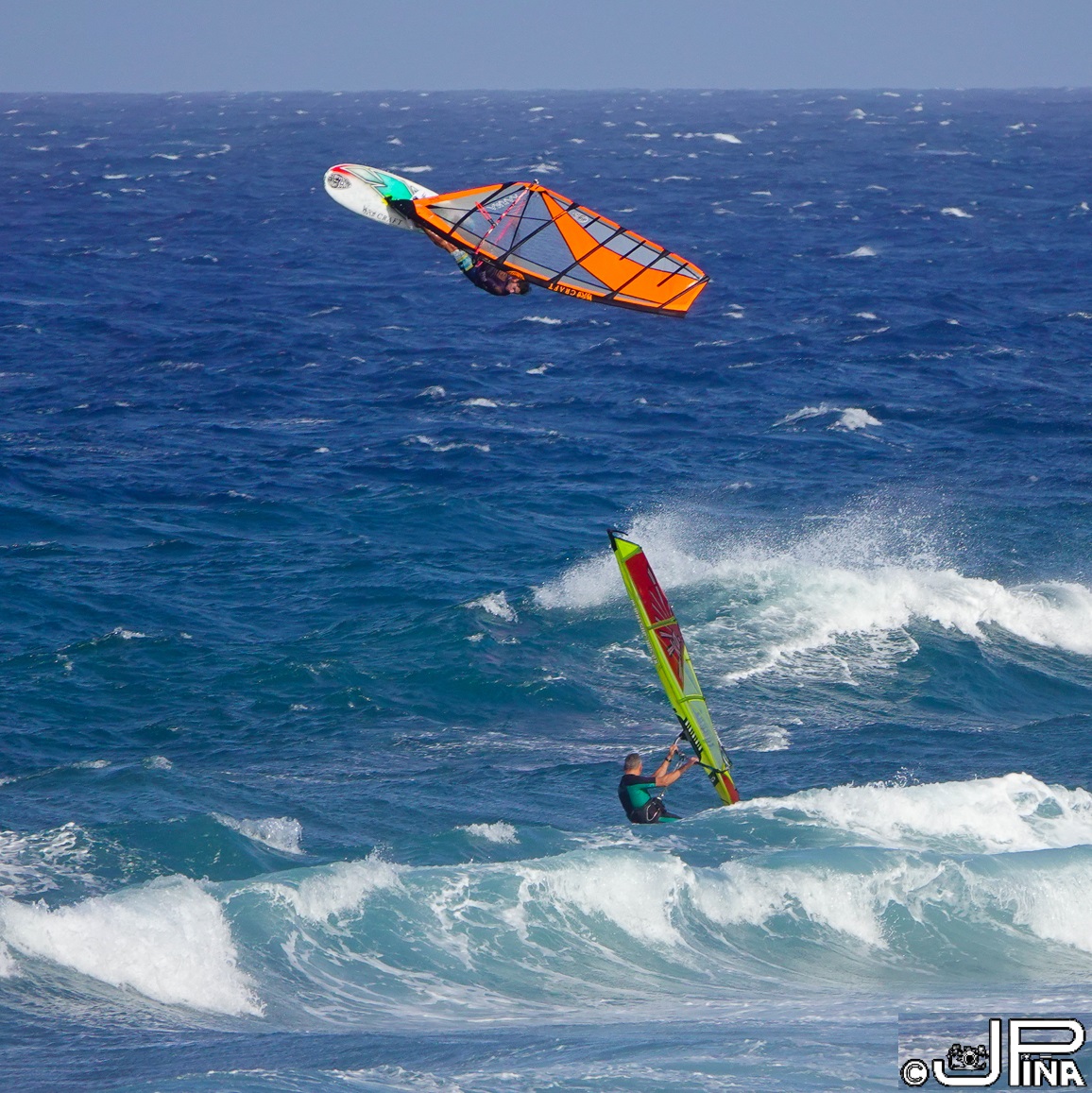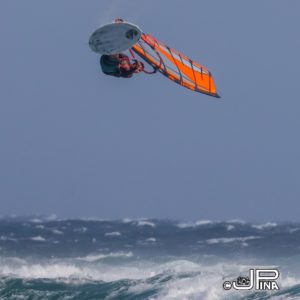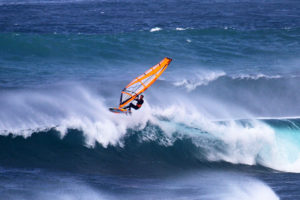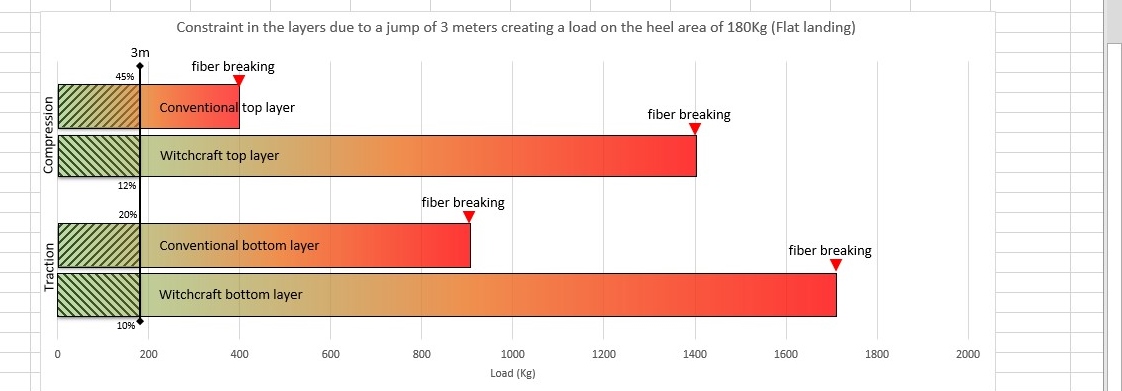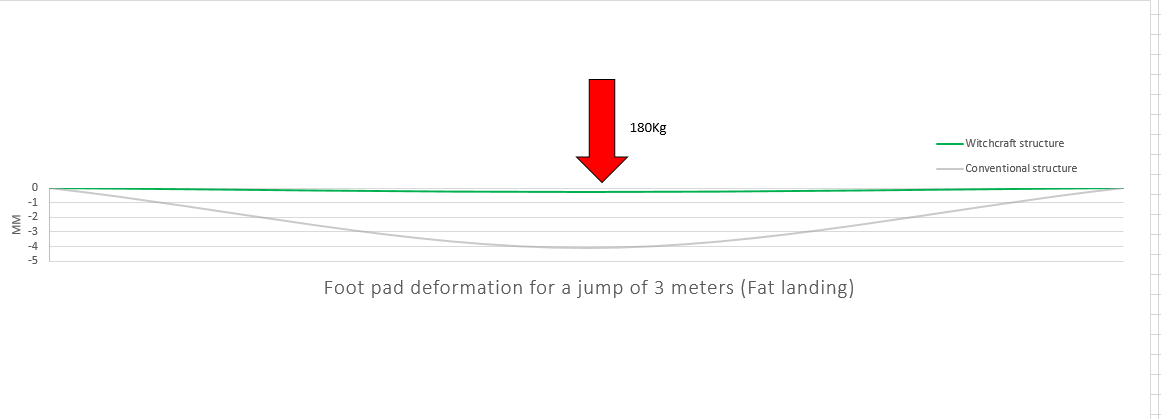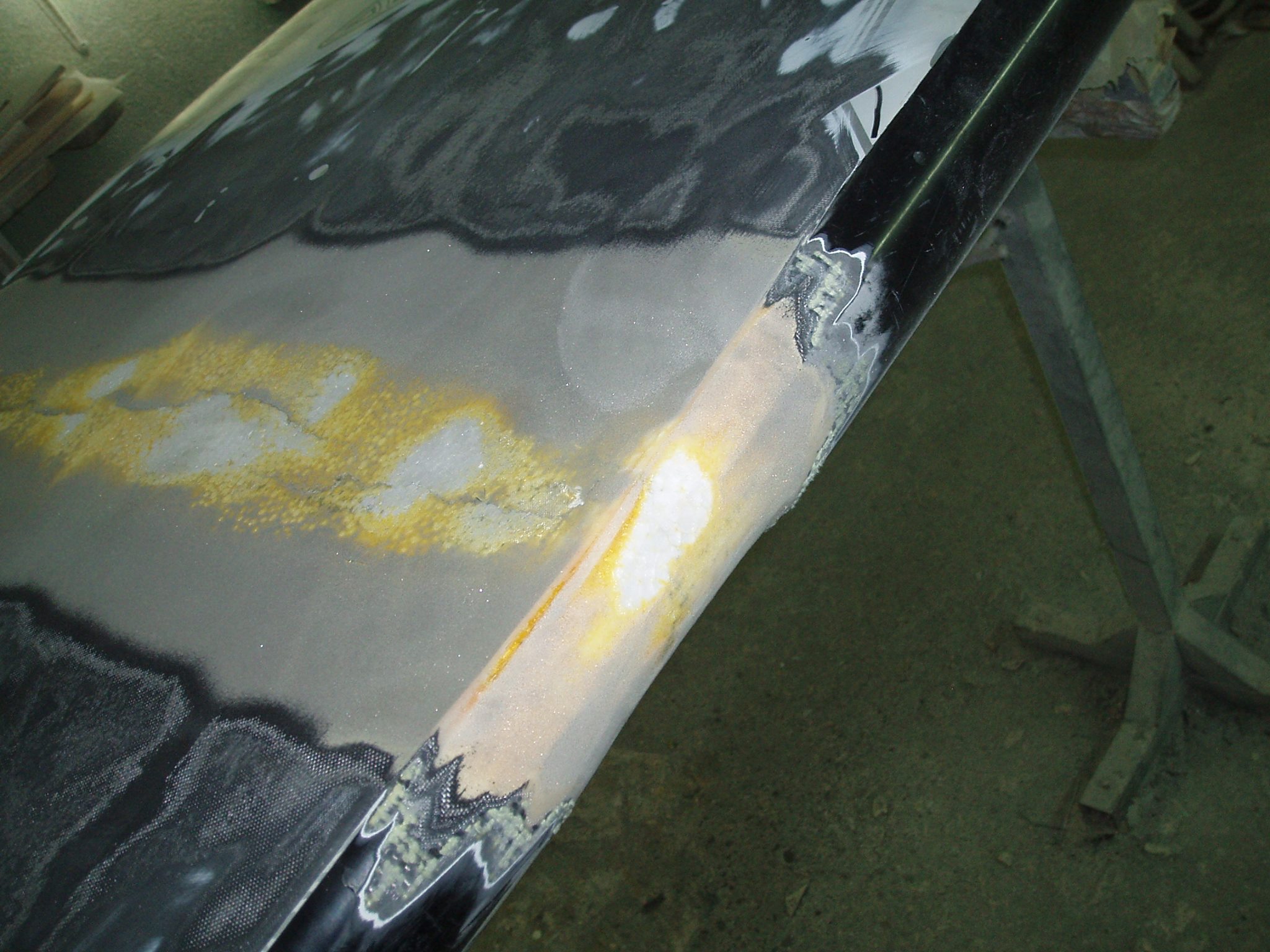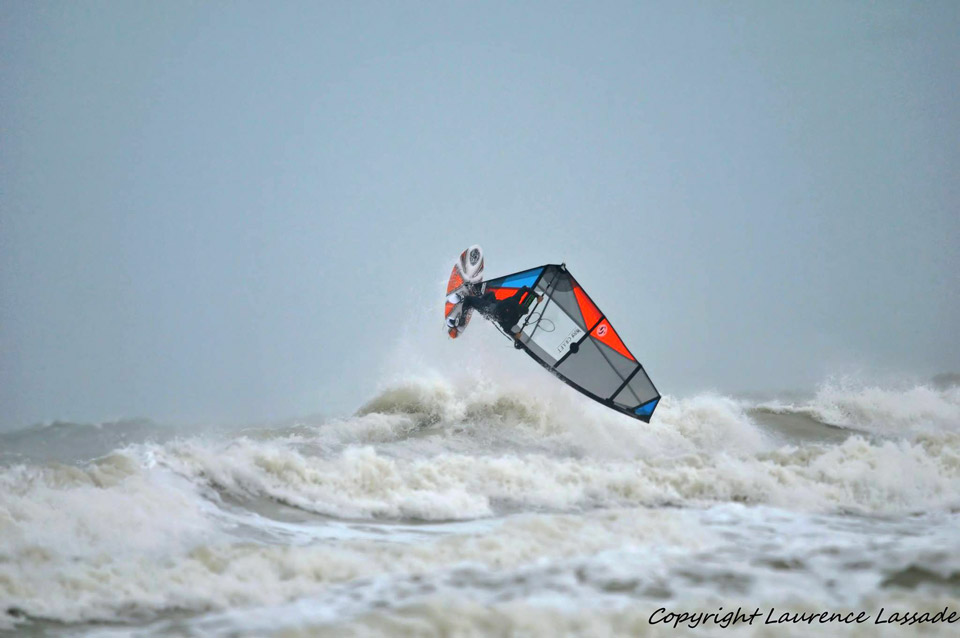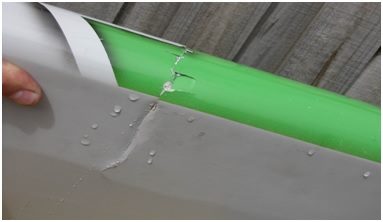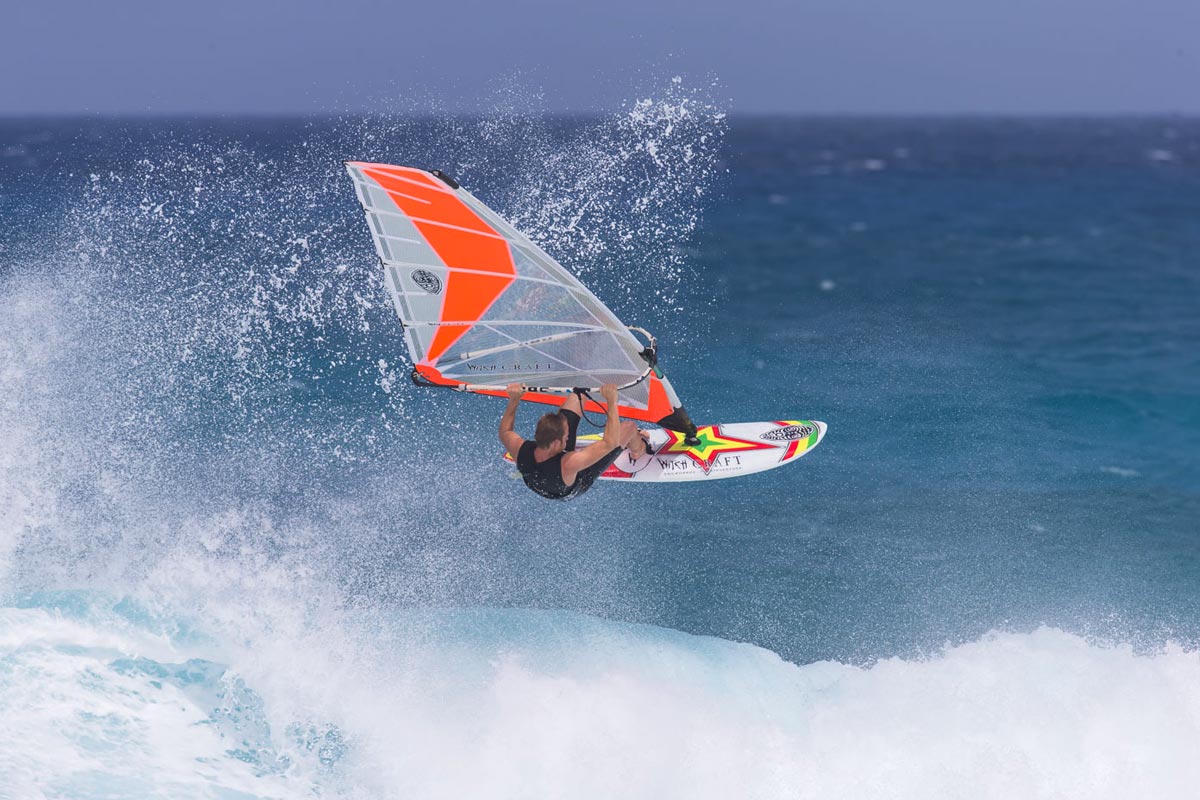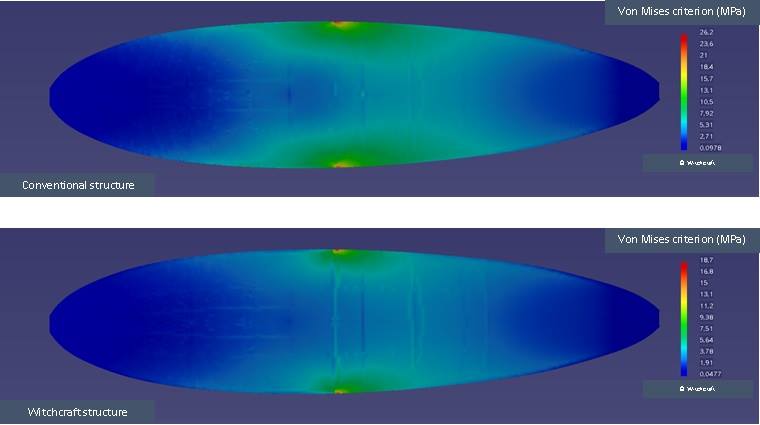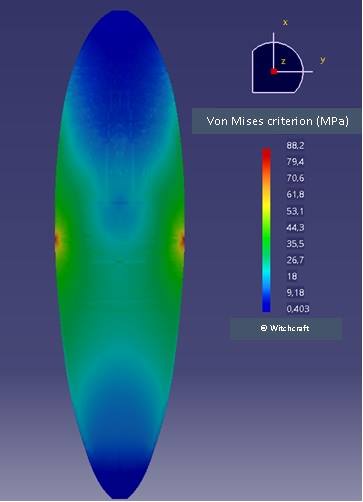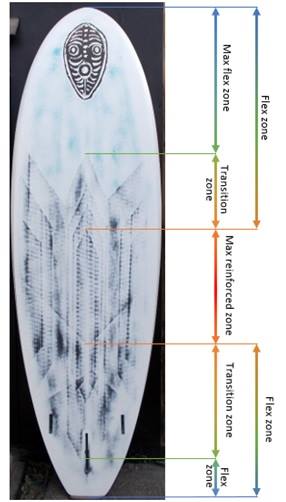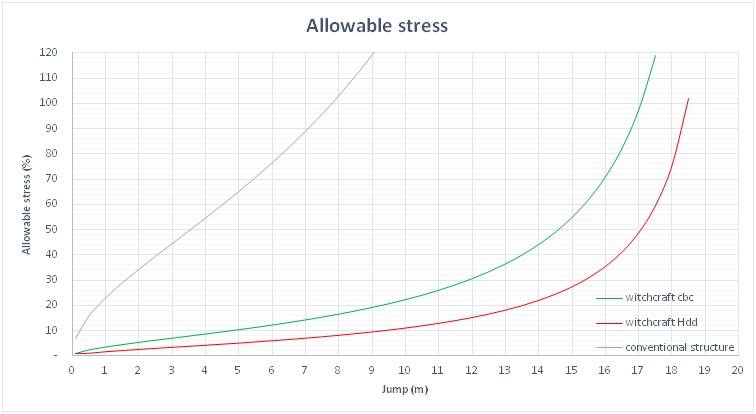Witchcraft boards are known for their strength but so far this was based on experience and not on calculations. It is hard to know how high the forces on a board actually are when sailing but we can compare a board’s resistance against the most common failures. So we asked engineering student David Cadel from France to perform strength analyses on these 2 main areas: heel area and bottom. Besides comparing the strength of new boards, also fatigue was taken into consideration.
All of our boards are made with a specific internal lay up which we like to keep to ourselves and the heavy duty boards are made with Dyneema as the principle fibre.
The conventional construction which was used for the comparison is: from outside to inside: Glass 80g/m²; carbon/Kevlar 200g/m²; 3mm PVC of 100kg/m³; 2x Glass 80g/m² for the foot pad area. For the bottom, the conventional construction was from outside to inside: 2 x glass 80gr/m², 5mm sandwich, 1 x glass 80gr/m². EPS of 15kg/m³
1 – Heel area
Here are the analyses of the maximum load the heel area can receive before breaking:
* Values calculated with a sailor of 75kg
Due to our internal lay up, we can note that for the same force, the loads on the structure are much lower than a conventional sandwich construction as used in most of windsurf wave boards.
On the following graph you can see for the same impact the deformation of the foot pad area. For a man of 75Kg with a wetsuit, the impact force is nearly equivalent to 180Kg.
* Values calculated with a man of 75kg
In addition to making our board stronger, our lay up greatly reduces the strain on the EPS core.
EPS is a light material but the fatigue properties are pretty poor. It is elastic up to a deformation of 3%, any deformation over 3% will lead to a permanent deformation and further weakening.
When you are making a jump, you are storing kinetic energy which will be transmitted to the board by your heels during the landing.
This energy cause flexion in your sandwich that has an effect on compression of the polystyrene block.
The fact is that polystyrene has many positive properties, however, it´s compression and fatigue properties are not very good. Deformations more than 3% are permanent on expanded polystyrene.
After a flat landing, we can observe some cracks in the polystyrene and permanent deformation.
Once the damage on the polystyrene form is done, no matter how you land, after each jump you do, you will just increase the deformation and the propagation of the cracks due to the poor resistance against the fatigue of the material until the complete failure of the board.
Feeling a crack under the foot pad can be difficult, your judgement can be false by the feeling of comfort that the crack brings to your board. Your board is in fact a little bit suppler and more absorptive on the impact due to the deformation of the polystyrene. But water can go into your board by the crack without you ever noticing and completely damage it.
* Values calculated with a man of 75kg on a flat landing
As you can see on the graph above, the witchcraft construction ensures you to don’t permanently deform the polystyrene bloc of our boards, and fatigue will show up much later or never.
So a conventional board will maybe not break on the first flat landing you will make, but it will show fatigue the more you deform the EPS over 3%.
2 – Bottom area
In the second phase, we will take a close look to the bottom section, which is most of the time the area where the board is cracked or broken.
Generally, we can note that the forces are highest between the front foot and the mast foot.
The forces on the bottom are more complicated since there is both a bending force, perpendicular to the plane from the water, and a compressive force in the length direction.
Both forces combined create a high risk of failure due to buckling. The strain is highest in the most outer layers. If the bottom sandwich construction flexes inward, the amount of material that remains in the outer layer at the bottom, is greatly reduced and failure will occur much earlier.
During the landing of a jump the board are working on the following way:
So during the impact, the tail of the board dug into the water because of your weight. The nose due to the strong deceleration attempts to whisk also the water. This causes the flexion of the board around an axis located between the mast foot and the front foot. The fibres are thus working in traction on the top of the board and in compression on the bottom.
Mechanically, following the Euler–Bernoulli beam theory, we can model the stress distribution as you can see on the opposite figure.
The rail of the board is thus subject to the maximal compression.
What is important to see on the “Impact simulation” figure, in addition of the difference of stress values of course, is the size of the area the most constrained. Because the maximal compression is located on the lower area, it’s very important to keep the bottom of the board as flat as possible in order to have the maximum of materials working in this area against the compression.
Bouke adds: ‘At Witchcraft, we have worked on the bottom design, to ensure its rigidity against the water pressure which tends to flex the bottom and thus decrease the constraints on this area.
Our HHD (Heavy Duty Dyneema) bottom construction, is deformed until 10 times less than a conventional structure during an impact.
The main trouble in the bottom area subject to the compression, is that the water pressure which attempts to flex the bottom of the board. The fibres (specifically the carbon) are made to work in compression and traction. But when you add the water pressure to the initial compression, that causes the buckling of the sandwich and the laminate which do not resist well to this kind of constraint.’
When you are landing a bigger jump, the constraints’ evolving like the following sketch.
As you can see, we are completely covering the bottom area subject to the main stresses in order to ensure the resistance of our board. We do not just put some carbon layers, they are gradually built up and ending in a point so the stiffness changes gradually thus avoiding weak points.
When we add the values of the deformation due to the foot pad and the deformation of the board, we obtain the following results:
** Fatigue failure for a hundred jumps
We can note on this graphic that the witchcraft structure begins to buck around a jump of 11 meters contrarily to a conventional structure which begin to buck long before.
Due to our specific design, our boards are stronger and more resistant against fatigue.
Off course these findings are theoretical and even if they match our average experiences in 25 years of board making quite well, there are many variables. Accidents can always occur, which is why the lay-up is also chosen to be repair friendly.
